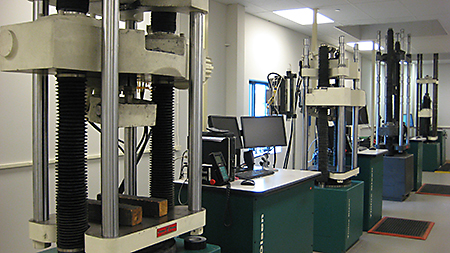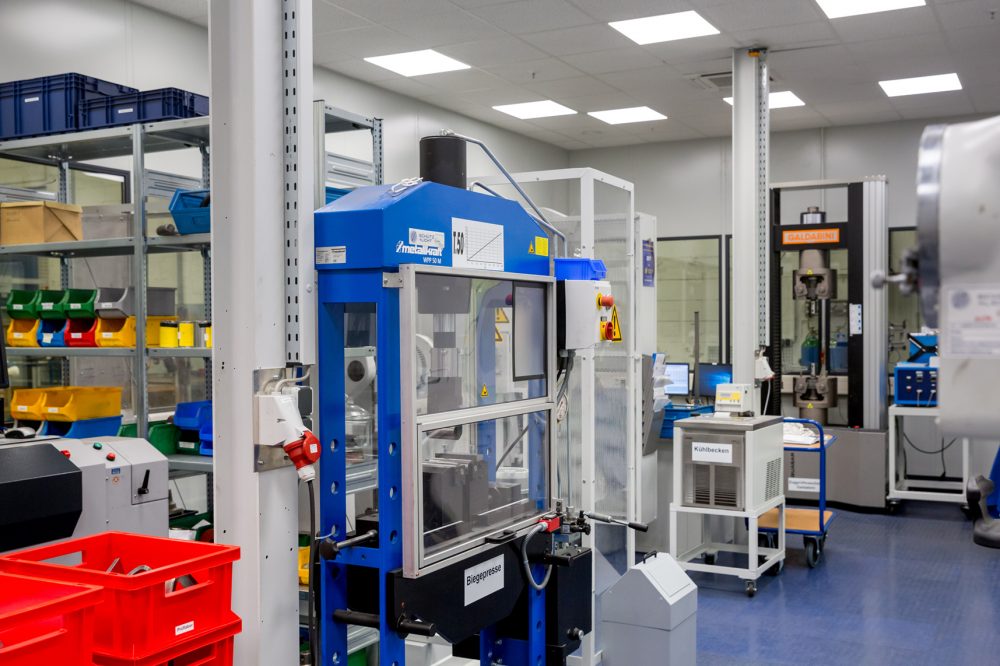Your Trustworthy Material Testing Lab Companion: A Commitment to Excellence
Your Trustworthy Material Testing Lab Companion: A Commitment to Excellence
Blog Article
Exploring the World of Product Screening and Analysis
Material testing and analysis plays a crucial function in various markets, from manufacturing to building and construction. It involves a systematic exam of various products to establish their homes, efficiency, and dependability. By utilizing a variety of strategies, such as non-destructive and devastating examinations, specialists have the ability to discover valuable insights about the habits and characteristics of materials. Furthermore, the tools used in material testing have evolved dramatically, making it possible for scientists and engineers to get a much deeper understanding of the products they function with. In this discussion, we will discover the value of material testing, explore common strategies and devices, talk about applications throughout industries, and emphasize arising fads that are shaping the future of this field.
Significance of Product Screening
Product testing is a vital element of the design and manufacturing sectors, guaranteeing the high quality, reliability, and safety and security of materials utilized in different applications. The relevance of material testing can not be overemphasized, as it plays a critical role in assuring the efficiency and long life of frameworks and products.
Among the primary reasons for conducting material testing is to assess the mechanical buildings of products. This consists of identifying their toughness, hardness, resilience, and elasticity. By subjecting materials to various mechanical tests, designers can accurately review their suitability for specific applications and guarantee they meet the needed requirements and criteria.
An additional critical aspect of material screening is the recognition of possible flaws or imperfections. By employing non-destructive screening methods such as ultrasonic screening or aesthetic assessment, producers can spot any type of imperfections that can endanger the architectural integrity or capability of the products. This aids in protecting against expensive failings, crashes, and prospective liabilities.
Moreover, material testing also permits the examination of product behavior under different ecological conditions. Aspects such as temperature, humidity, and corrosive environments can significantly impact the efficiency and lifespan of products. By subjecting them to environmental screening, designers can evaluate their resistance to such conditions and make educated decisions concerning their viability for details applications.
Common Techniques in Material Evaluation
Various methods are generally utilized in the evaluation of products to determine their features and homes. These techniques play a crucial function in understanding the habits and efficiency of materials in various applications.
An additional widely used technique is spectroscopy, which involves the interaction of products with electromagnetic radiation. As an example, infrared spectroscopy can determine the practical teams present in a product, while ultraviolet-visible spectroscopy can identify its optical residential or commercial properties. X-ray diffraction is one more powerful technique that enables researchers to assess the crystal structure of products and recognize their stages.
Thermal analysis is likewise commonly employed to research the thermal actions of materials. Differential scanning calorimetry, for circumstances, can determine the melting factor and warm capacity of a product, while thermogravimetric evaluation can measure its weight loss as a function of temperature.
Furthermore, mechanical screening is important to recognize the mechanical residential or commercial properties of products. Methods such as tensile screening, solidity testing, and impact testing provide important information concerning a material's sturdiness, strength, and stiffness.
Tools Used in Material Testing
An array of specialized instruments and tools is used in product screening to precisely analyze the homes and behavior of different products. These tools are vital for conducting experiments and getting reputable data in numerous industries, consisting of aerospace, automotive, building and construction, and production.
One of the most common tools made use of in product testing is the universal testing machine (UTM) An additional necessary tool is the solidity tester, which determines a product's like it resistance to indentation or infiltration.

Furthermore, thermal analysis tools, consisting of differential scanning calorimeters (DSC) and thermogravimetric analyzers (TGA), are used to check out the thermal residential properties and habits of products, such as melting factors, glass shifts, and decay temperature levels.
Applications of Material Testing and Analysis
To totally make use of the valuable data gotten with the use of specialized instruments and devices in product testing, it is important to explore the vast array of applications where this analysis can be used. Product testing and analysis play an important function in different markets, consisting of aerospace, auto, building and construction, and manufacturing.
In the aerospace industry, product testing and evaluation are made use of to make certain the security and reliability of airplane elements. material testing lab. By subjecting products to severe problems, such as high temperature levels and pressures, designers can assess their efficiency and make informed decisions regarding their suitability for use in airplane
In the automotive sector, product testing and analysis are utilized to enhance the resilience and efficiency of cars. By evaluating the homes of different materials, suppliers can develop stronger and lighter parts, causing enhanced gas performance and general automobile performance.
In the building and construction sector, product testing and analysis are made use look at here now of to make certain the structural honesty of buildings and infrastructure - material testing lab. By analyzing the strength and longevity of building and construction materials, designers can develop structures that can endure ecological problems and numerous lots, making certain the safety of owners
In the production market, product screening and evaluation are essential for high quality control purposes. By examining the residential or commercial properties of raw materials and completed products, manufacturers can recognize any type of problems or weak points, allowing them to make essential improvements and supply top notch items to consumers.
Future Trends in Material Testing and Analysis
Emerging innovations are improving the field of product screening and evaluation, changing the means industries assess and maximize the efficiency of materials. As modern technology remains to development, new patterns are emerging that are expected to even more boost the capacities of material screening and evaluation.
One of the essential future trends in material testing and evaluation is using fabricated knowledge (AI) and artificial intelligence (ML) formulas. These innovations can assist in automating the analysis process, permitting faster and much more accurate results. AI and ML can likewise assist in determining patterns and fads in large datasets, enabling researchers to make even more informed decisions.
One more fad is the advancement of innovative non-destructive testing (NDT) strategies. NDT techniques, such as ultrasonic testing and thermal imaging, are ending up being a lot more sophisticated, permitting the detection of problems and problems in products without the requirement for harmful screening. This not just saves time and resources however likewise guarantees the integrity of the checked products.
Furthermore, there is an expanding rate of interest in nanotechnology and its impact on product screening and evaluation. Nanomaterials show special buildings that differ from their mass counterparts, and specialized strategies are being developed to evaluate and define these materials at the nanoscale.
Verdict
In conclusion, material screening and evaluation is a vital facet of numerous markets and study areas. As modern technology continues to development, future patterns in material testing and analysis are expected to better enhance accuracy, efficiency, and development in this area.

Report this page